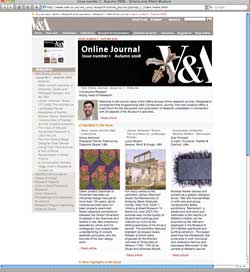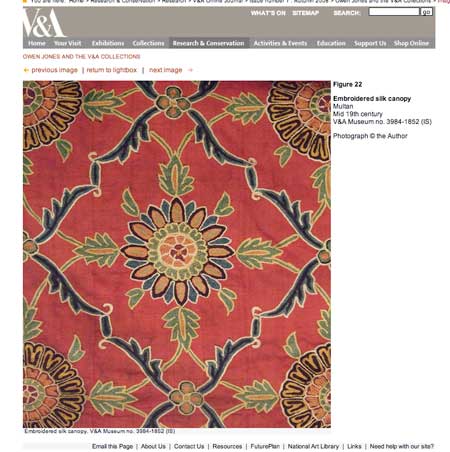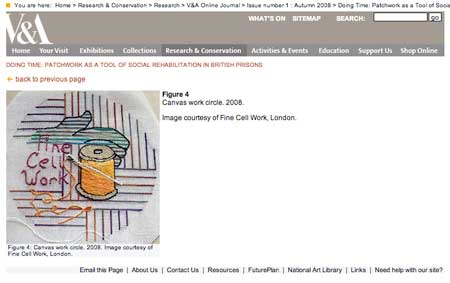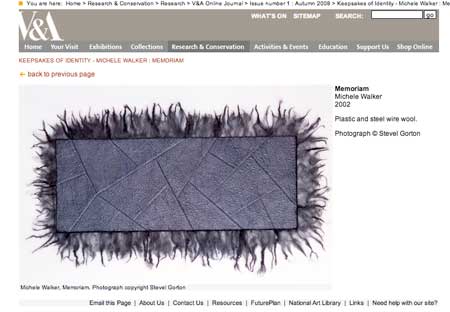 Make a cuppa, and settle back for some brain food because poking around the V&A website I discovered Issue 1 of the V&A Online Journal.
Make a cuppa, and settle back for some brain food because poking around the V&A website I discovered Issue 1 of the V&A Online Journal.
This journal is an annual publication featuring research undertaken in connection with the V&A and houses articles on the history of art, architecture and design, that relate to the V&A’s collections.
I am picking the eyes out but hopefully these little snippets will tempt you to read an article or two. I know the titles sound academic but give the writers a chance as they are actually very accessible.
It is really worth it or if you do not have time today, do what I plan to do, which is settle down and read an article a day over my lunch as I like to chew over these extended pieces.

In the first issue Sonia Ashmore has looked at Owen Jones and the V&A Collections
“Owen Jones gained both notoriety and fame in his day. Yet the sparsity of serious historical attention given to Jones is surprising, considering his role in the history of the decorative arts, design education, and the development of the South Kensington Museum, the continuing success of some of his designs (versions of his wallpaper designs marketed in the 20th century by Laura Ashley), and continuing sales of The Grammar of Ornament.”

Claire Smith’s Doing Time: Patchwork as a Tool of Social Rehabilitation in British Prisons. This fascinating article is introduced:
“There is a longstanding affiliation between confinement and creativity. While restricting the movement of the human form, prisons, workhouses, internment camps, hospitals and asylums have long been the site of great imagination and industry. Nineteenth-century Parisian prisons promoted furniture-making, while in the late nineteenth and early twentieth century, British officials in India installed looms in several prisons to produce carpets and textiles. In 2010 a V&A exhibition will place examples of over 300 years of British quilting and patchwork within their historical and social contexts. It will include the 1841 ‘Rajah Quilt’, the only known transportation quilt in a public collection, and a newly commissioned collaboration with the charity Fine Cell Work, designed and made by the inmates of HMP Wandsworth.”
As a side note for my Aussies readers, this article discusses The Rajah quilt which is one of Australia’s most important textiles because it was stitched by women convicts on board the ship Rajah while being transported from England to Tasmania and since it is made up of 2815 pieces it holds patterns, printing techniques and design influences in other words a cross-section of textile technology of the period.

Sue Prichard’sKeepsakes of Identity – Michele Walker : Memoriam will interest quilters particularly.
“Quilt making fulfils a number of roles for the maker and society: the process of making may represent an act of remembrance, a rite of passage (say a wedding or a birth) or provide a forum for overt political or social commentary. Stitching may be a solitary occupation, a moment to reflect or meditate, or a communal activity, as illustrated by the evocative image of the quilting bee. The beautifully crafted quilts produced either in isolation or in communities form part of a cultural continuum that transcends time and place; their makers creating both ‘personal and historical legacies’.”
Enjoy everyone.. well… at least it is better than the Sunday papers with their constant doom and gloom



I love quilting and I admire British quilting. Thanks for letting us know about the exhibition. I will have it in mind so I can be there
Sharon,
I didn’t get past the V&A! I spent a little while reading the magazine, then explored textiles ….. again! Pleasant Sunday afternnon!
Judy B
Thx for the heads up. This will keep me busy for days. I like your idea of selecting one to read over lunch or tea break. I purchased one of their wall calendars (for 2008) and just loved the images!
…additionally, I have seen work similar to this at the outsider art fair in N.Y.
http://twokitties.typepad.com/my_weblog/2009/02/ray-materson-prison-sock-embroidery.html
So interesting about confinement and creativity…I went to an exhibit a few years back of art from Japanese internment camps where American citizens of Japanese descent were placed during World War II – some wonderful things, most of them did not continue to make art after they left.